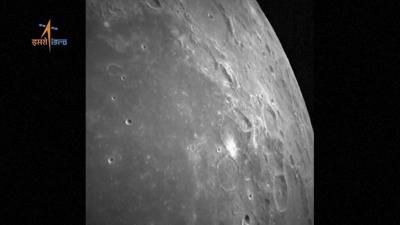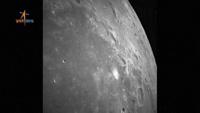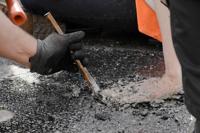NEW DELHI (AP) — India's lunar rover continued its walk on the moon Friday after the historic touch-down of India's spacecraft near the moon's south pole earlier this week, the country's space agency said. The rover's data collection and experiments could help determine if there is oxygen and hydrogen on the moon.
The Chandrayan-3 Rover is expected to conduct experiments over 14 days, including an analysis of the mineral composition of the lunar surface, the Indian Space Research Organization has said.
“The rover has successfully traversed a distance of about 8 meters (26.2 feet),” ISRO said Friday. "All payloads on the propulsion module, lander module, and rover are performing nominally.”
The rover will also study the atmosphere of the moon and seismic activities, ISRO Chairman S. Somnath said.
“These experiments would pave the way for new scientific research about the availability of oxygen and hydrogen on the surface of the moon and can give us a direct or indirect answer as to whether there was life on the moon," the Press Trust of India news agency cited India's Science and Technology Minister Jitendra Singh as saying.
Pallava Bagla, a science writer and co-author of books on India’s space exploration, said the rover crawls, or moves at low speed, for safety reasons to minimizes shocks and damage to the vehicle on a rough surface and negotiating obstacles. It also has limited battery power.
On Thursday, Somnath said the lander had touched down close to the center of the 4.5-kilometer-wide (2.8-mile-wide) area that had been targeted for the landing. “It landed within 300 meters (985 feet) of that point.”
After a failed attempt to land on the moon in 2019, India on Wednesday joined the United States, the Soviet Union and China as only the fourth country to achieve this milestone.
The successful mission showcases India’s rising standing as a technology and space powerhouse and dovetails with the image that Prime Minister Narendra Modi is trying to project: an ascendant country asserting its place among the global elite.
The mission began more than a month ago at an estimated cost of $75 million. Somnath said that India would next attempt a manned lunar mission.
Many countries and private companies are interested in the moon's South Pole region because its permanently shadowed craters may hold frozen water that could help future astronaut missions, as a potential source of drinking water or to make rocket fuel.
India’s success comes just days after , which was aiming for the same lunar region, spun into an uncontrolled orbit and crashed. It would have been the first successful Russian lunar landing after a gap of 47 years. Russia’s head of the state-controlled space corporation Roscosmos to the lack of expertise due to the long break in lunar research that followed the last Soviet mission to the moon in 1976.
Active since the 1960s, India has launched satellites for itself and other countries, and successfully put one in orbit around Mars in 2014. India is planning its first mission to the International Space Station next year, in collaboration with the United States.








































